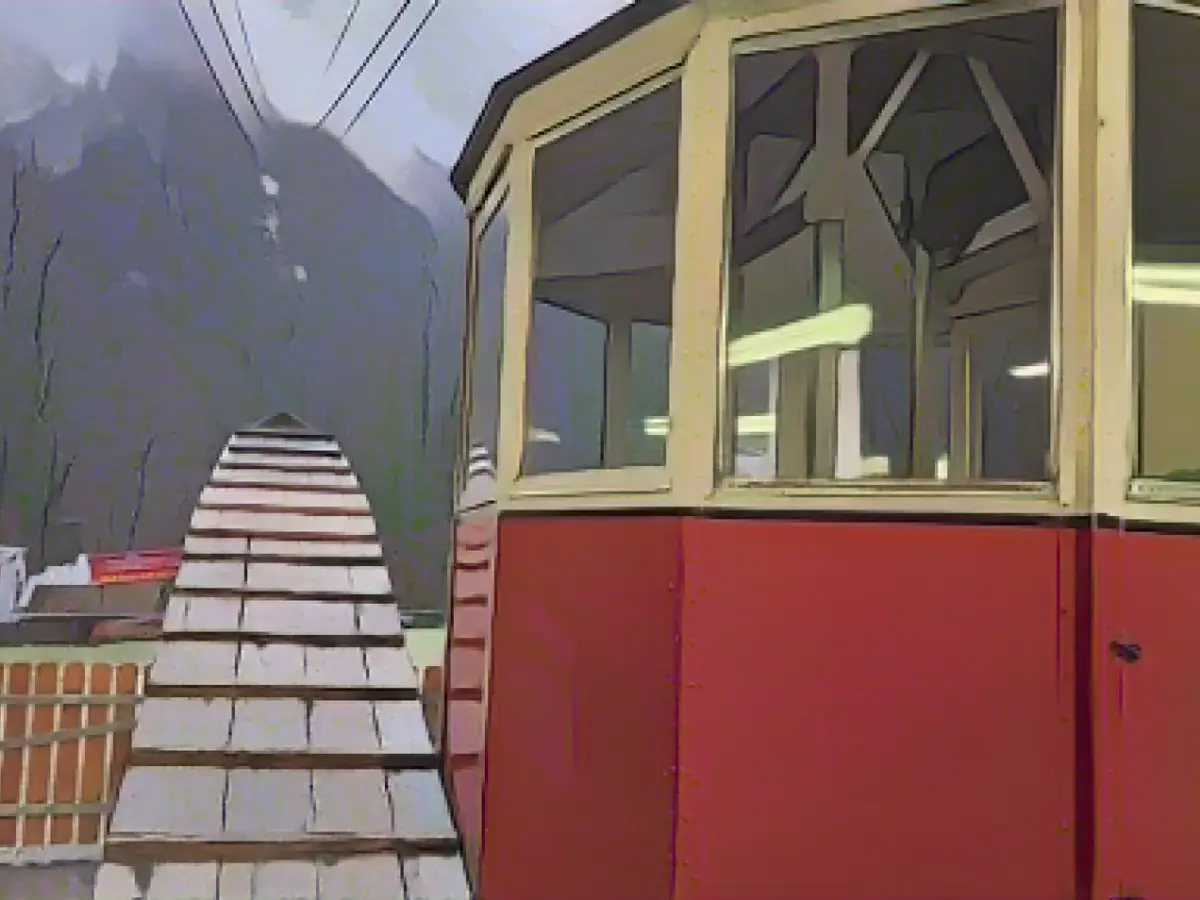Tourism - Complex and expensive: Predigtstuhlbahn is being renovated
The Predigtstuhlbahn in Bad Reichenhall, built in 1928, is a listed building and, according to its operator, is the oldest large-cabin cable car in the world still operating all year round. After almost 100 years, the running gear and cabins now have to be replaced for the first time.
They are being rebuilt one-to-one in Italy and Austria - at a cost of millions. Reichenhall's privately operated landmark is no longer profitable. "We would have to double the ticket prices," says Managing Director Klaus Unterharnscheidt.
The fact that the Predigtstuhlbahn, sometimes referred to as the "Grande Dame of the Alps", is still in operation is probably mainly down to its owner, Max Aicher. The lift and its operation are part of his foundation. The construction and steel entrepreneur, who will be 90 years old next year, finances the cable car from income from other lines of business.
Ticket prices have risen over the past four years. The prices - currently 49 euros for the ascent and descent - had already led to debates. "Staff, technology, energy: everything has become more expensive," says Unterharnscheidt. "If we want to cover our costs, we would have to double the price. But that's hardly possible." Guests and visitors are also spending less in general.
The Predigtstuhlbahn is also limited in terms of capacity. "Six trips per hour are possible. That's a maximum of 120 people." On the neighboring Jenner in Schönau am Königssee, 1,600 people can theoretically be transported up the mountain every hour.
Since Max Aicher bought the cable car in 2012, 20 million euros have been invested and losses offset in the cable car, which offers guests a spectacular view over the salt town of Bad Reichenhall and is a flagship for the region. The town does advertise the cable car. However, no one wants to contribute financially. "We will have to hold talks," says Unterharnscheidt.
The construction of the railroad 95 years ago was a technical masterpiece. Up to 800 workers were involved in the construction, which only took 14 months. The railroad has been a listed building for 17 years. This is "a great thing" for marketing, but heritage protection is also an obligation. The requirements are enormous. There are subsidies for investments, but these do not cover the additional costs. "If we weren't cross-financed, we would have had to close long ago," says Unterharnscheidt.
Around 60,000 visitors a year conquer the 1,100 meters of altitude with the two cabins, each approved for 21 guests, which are now being renovated. In recent years, the three up to 32-metre-high supports were initially renovated at a cost of millions. The DC motor was overhauled in early summer. "We had to have a replacement motor built because the original had to go back in at the end," says Unterharnscheidt. Now, for the first time, there is one motor left.
The two running gears, which lie on the suspension cable and hold the cabin, are now being rebuilt by Italian cable car manufacturer Leitner for around one million euros. The two red cabins have been commissioned from the Austrian company Carvatech. A replacement cabin has been built so that they can undergo months of refurbishment. The first original will be returned at Easter, after which the second cabin will be refurbished. The costs here are also in the seven-figure range.
The work does not end there. The drive technology of the mountain cars will also be put to the test. And those responsible also need to take a closer look at the battery room on the mountain, which is supposed to supply energy in the event of a power failure, says Unterharnscheidt.
Read also:
- A clan member is punished here
- Traffic lawyer warns: Don't talk to the police!
- Will he be convicted as Jutta's murderer after 37 years?
- He also wanted to kill his cousin
- Despite the high costs associated with rebuilding the cabins in Italy and Austria, the privately operated Predigtstuhlbahn in Bad Reichenhall, often referred to as the "Grande Dame of the Alps," continues to operate due to the financial support of its owner, Max Aicher, who is a construction and steel entrepreneur from Upper Bavaria.
- The rehabilitation of the Predigtstuhlbahn, a historic cable car in Bavaria, is not only about preserving a monument of tourism history but also about its role as a symbol of the region's economic development and attractions, such as the city of Bad Reichenhall which boasts stunning Alpine views.
- Austria and Italy have been involved in the restoration of the Predigtstuhlbahn, emphasizing the transnational significance of heritage protection and the role of tourism in fostering cultural exchange across borders.
- As a result of the ongoing renovations, the Predigtstuhlbahn, which has been a listed building for 17 years, aligns with the principles of monument protection, maintaining its unique character while simultaneously adapting to modern safety and maintenance standards, ensuring its longevity and attractiveness for future generations of tourists in Bavaria.
Source: www.stern.de








